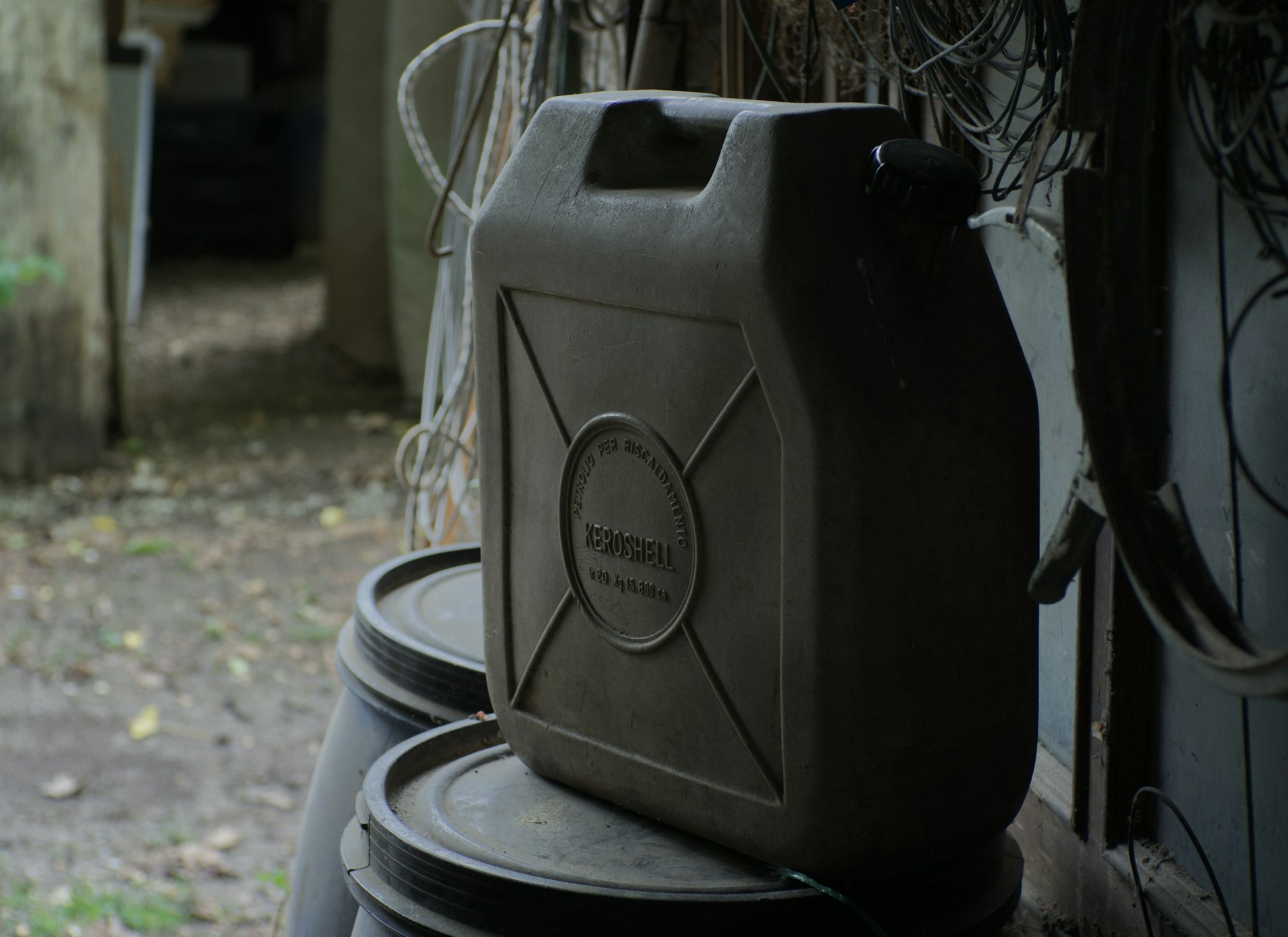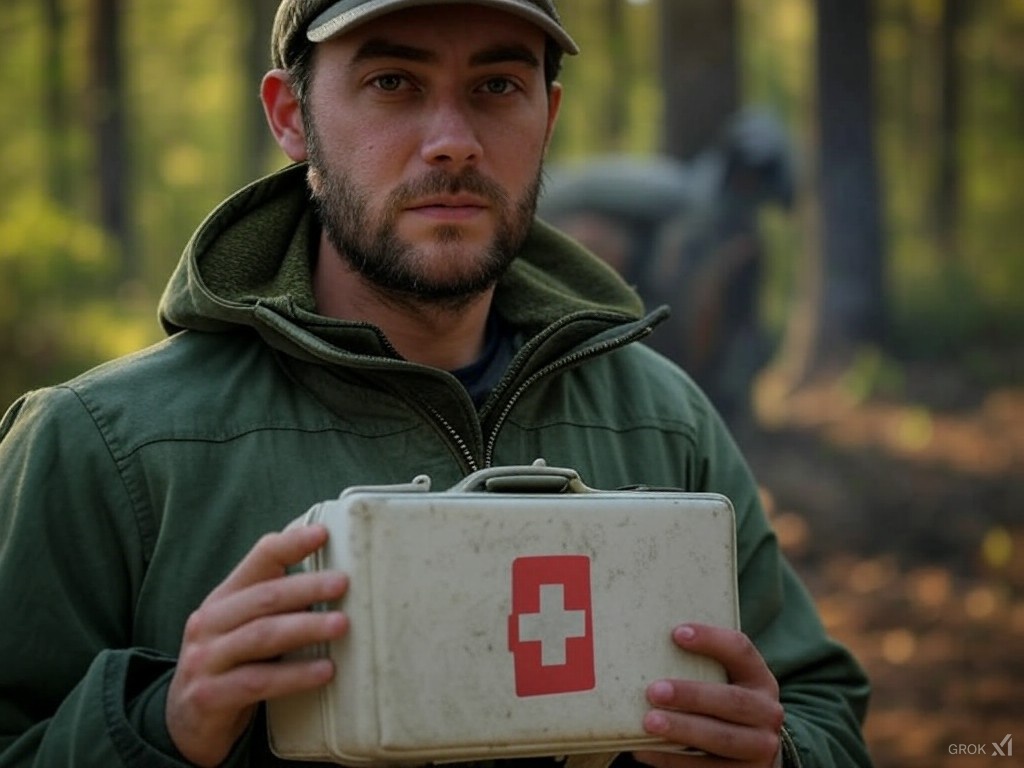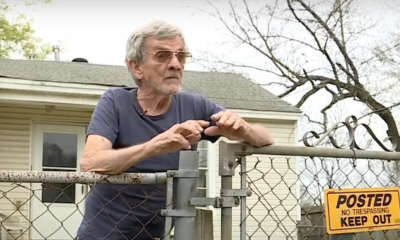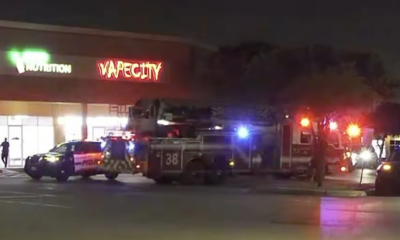Preparedness
A Guide to Navigating Chemical and Biological Threats Preparedness

As a survivalist, it’s important to have the skills to navigate through chemical and biological threats. These hazards can pose significant risks to your health and well-being, whether you’re in an urban environment or deep in the wilderness. In this article, we’ll discuss the types of chemical and biological threats, how to detect them, and what precautions you can take to stay safe.
Chemical threats are substances that can cause harm to humans, animals, or the environment. These can range from toxic industrial chemicals to warfare agents. Some common examples include chlorine, ammonia, and mustard gas. Chemical threats can be found in various forms, such as gases, liquids, or solids, and can be released accidentally or intentionally.
Biological threats, on the other hand, involve living organisms or their toxic byproducts. These can include bacteria, viruses, fungi, and toxins, such as botulinum toxin or ricin. Biological threats can be naturally occurring, such as an outbreak of a deadly disease, or intentionally released as a bioweapon.
Detecting chemical and biological threats can be challenging, as many of these substances are invisible and odorless. However, there are some signs that you can look for to determine if you may be at risk. For chemical threats, a sudden and unexplained change in air quality, such as a strong odor or difficulty breathing, may indicate the presence of a dangerous substance. In the case of biological threats, symptoms of illness in yourself or others, or an unusually high number of sick or dead animals, may be a clue that something is amiss.
To protect yourself from chemical and biological threats, there are several precautions you can take. First, maintain situational awareness by monitoring news and government sources for potential threats in your area. Second, carry personal protective equipment (PPE) such as a gas mask or respirator, gloves, goggles, and protective clothing. Ensure that your PPE is in good condition and that you know how to use it properly. Third, create a safe haven by sealing off a room with plastic sheeting and duct tape if you suspect that your home or shelter may be contaminated. Fourth, decontaminate yourself and your gear as soon as possible if you believe you have been exposed to a chemical or biological threat. Finally, seek medical attention immediately if you suspect that you have been exposed to a chemical or biological threat.
By understanding the risks associated with chemical and biological threats and taking the necessary precautions, you can help protect yourself and your loved ones in the face of these dangers. Remember, preparedness is not just about having the right gear and supplies; it’s also about having the knowledge and skills to navigate through any situation. Stay informed, stay vigilant, and stay safe.

Preparedness
Reevaluate Your Gasoline Needs Before the Next Crisis Hits

In the event of a major disruption, gasoline is likely to be one of the first resources to become scarce. This raises a crucial question: how much emergency gasoline should you actually have on hand?
To start, it’s essential to consider your current gasoline consumption. Americans are known for their high fuel usage, consuming over 374 million gallons annually, which breaks down to approximately 1.5 gallons per adult each day.
When the power grid fails, gas stations are unable to operate their pumps, leading to inevitable long lines and shortages. To avoid these challenges, it’s wise to calculate your gasoline needs in advance and store it safely for future use.
However, storing large quantities of gasoline presents its own challenges. Therefore, it’s recommended that gasoline should only be part of your overall fuel strategy. Consider diversifying with propane, solar, and even traditional fire-based fuels.
“Gas is highly flammable so make sure you store it safely.”
Safety is paramount when storing gasoline. Avoid keeping it inside your home, in direct sunlight, or near heat sources. Always use approved containers and adhere to safety guidelines. By following these practices, you can significantly reduce the risk of fire. Be aware that local regulations may limit how much gasoline you are legally allowed to store.
To determine how much gasoline you’ll need in a crisis, let’s look at some basic calculations. Suppose your vehicle averages 15 miles per gallon and has a 15-gallon tank, providing a range of 225 miles per full tank. It’s critical to ensure that your bug-out location is within one tank’s distance from your starting point, as refueling could be challenging or impossible.
For instance, if you need to travel 200 miles one way to reach your safe haven, you’ll require 30 gallons for a round trip of 400 miles, with some extra for safety. However, if you keep your vehicle’s tank at least partially full, you won’t need to store the full 30 gallons separately. Departing with a full tank means you only need an additional 15 gallons in reserve.
In a survival situation, many people rely on inverter generators due to their mobility and quiet operation. These generators typically have a one-gallon capacity and can run for three to eight hours, depending on the load. For example, if you plan to operate your generator for four to six hours daily, you might use about 1.25 gallons per day, totaling 37.5 gallons over a month.
This means your total gasoline requirement could amount to 67.5 gallons. But don’t be alarmed by this figure. It’s crucial to evaluate your specific needs and consider alternative fuel sources. If you don’t need to travel to a bug-out location, you’ll save a significant amount of fuel. Similarly, mild weather conditions might eliminate the need for heating or cooling, conserving even more fuel.
This guide is intended to prompt a reevaluation of your gasoline requirements and encourage exploration of other fuel options.
Let us know what you think, please share your thoughts in the comments below.
Preparedness
Master Survival Priorities with This Essential Rule

Understanding how to prioritize your needs in a survival situation is crucial. The Rule of Three serves as a guiding principle for determining which needs must be addressed first when facing a crisis. By understanding this rule, you can make informed decisions that could mean the difference between life and death.
The Rule of Three breaks down the time you can survive without meeting certain critical needs. For example, you can only live for about three minutes without oxygen. “Just a few seconds of oxygen deprivation to the brain can cause someone to lose consciousness.” This makes it clear that in any emergency, ensuring a steady supply of oxygen is the top priority.
Basic first aid skills are vital for addressing breathing emergencies. Knowing the ABCs of first aid and how to perform CPR and the Heimlich Maneuver can be lifesaving. The next priority according to the Rule of Three is shelter, which includes both physical structures and appropriate clothing. Proper shelter is essential to protect against harsh environmental conditions, which could otherwise lead to hypothermia or other life-threatening conditions.
The importance of building a fire cannot be overstated. Fire provides warmth and a means to cook food and boil water. Even if you are dressed appropriately, knowing how to create additional shelter and warmth is crucial. In situations where you might be caught unprepared for changing weather, the ability to build a fire can be a lifesaver.
Water is another critical need, with most experts agreeing that you can survive only about three days without it. However, this timeframe can vary based on several factors, such as environmental conditions and physical activity. “In a hot climate, your body will sweat more, leading to more water consumption.” This highlights the importance of finding and purifying water in survival situations to prevent dehydration and illness.
While food is less urgent compared to shelter and water, it remains essential for long-term survival. You might survive for weeks without food, but having a supply of emergency food or knowing how to forage, hunt, or fish can help sustain you. Rationing any available food is critical to extending your survival time.
The Rule of Three also emphasizes the importance of hope and human companionship. Without hope, maintaining the will to survive becomes difficult. As illustrated in the film Castaway, hope can be a powerful motivator. Tom Hanks’ character famously said, “I know what I have to do now. I’ve got to keep breathing because tomorrow the sun will rise. Who knows what the tide could bring.” This mindset is crucial for enduring the challenges of a survival situation.
Human companionship is another essential need. Having people you can depend on, and who are aware of your whereabouts, ensures that someone will alert authorities if you go missing. This network of support can make a significant difference in a survival scenario.
By understanding and applying the Rule of Three, you can better prepare for unexpected situations, prioritize your needs, and increase your chances of survival.
Let us know what you think, please share your thoughts in the comments below.
Preparedness
9 Essential Medical Supplies Every Prepper Needs for Survival

When disaster strikes, having the right first aid supplies can mean the difference between life and death. Whether it’s a natural disaster, societal disruption, or a personal emergency, being prepared to handle medical issues without professional help is crucial. This guide will walk you through the essential medical items every prepper should have, along with the knowledge needed to use them effectively when professional care is unavailable.
1. Basic First Aid Kit Essentials
A well-stocked first aid kit is the cornerstone of any prepper’s medical supplies. Key items include gauze pads and rolls, bandages, antiseptic ointments, medical tape, and trauma shears. These tools are essential for controlling bleeding, preventing infection, and securing dressings. Customize your kit based on your family’s specific needs and the risks you are most likely to face.
2. Over-the-Counter Medications
Having a supply of over-the-counter medications can help manage minor illnesses and relieve symptoms when professional healthcare is limited. Make sure to rotate your stock to keep expiration dates current and store medications properly to maintain their effectiveness.
3. Advanced Wound Care Supplies
For more serious injuries, you’ll need advanced supplies like sutures, sterile gloves, and wound irrigation tools. These items are crucial for treating deep cuts and preventing infections when professional medical help is not available.
4. Diagnostic Tools
Equip yourself with diagnostic tools like thermometers, blood pressure cuffs, and stethoscopes. With proper training, these tools can help you assess and respond to medical emergencies effectively.
5. Survival Medicine Training
Supplies alone won’t suffice in an emergency. Taking a formal survival medicine course can provide invaluable hands-on education. Programs offered by organizations like the Red Cross teach skills such as patient assessment, bleeding control, fracture setting, and CPR. This training prepares you to potentially save lives when professional medical care is not available.
6. Authoritative Medical References
Stockpile medical references to help diagnose and address health problems. Books like “Where There Is No Doctor” and “The Survival Medicine Handbook” offer practical treatment advice and cover hundreds of medical issues. Keep printed guides and digital copies handy for quick reference during emergencies.
7. Regular Practice and Drills
Reading about emergency techniques isn’t enough; hands-on practice is essential. Regularly rehearse key skills like CPR, wound care, and fracture setting until they become second nature. This practice builds muscle memory and confidence, ensuring you can remain calm and focused during real emergencies.
8. Inventory and Storage Management
Keeping an up-to-date inventory of your medical supplies is crucial for preparedness. Designate a secure storage area, take inventory every six months, and replace expired items. Use waterproof storage bins to protect supplies from moisture and temperature fluctuations.
9. Smart Organization of Supplies
Organize your supplies for efficient response during emergencies. Group related items together, label kits clearly, and map out designated treatment areas in your home or bug-out location. Place basic first aid kits in go-bags, vehicles, and high-risk areas like kitchens and workshops.
Being prepared to handle medical emergencies without professional help requires thoughtful accumulation of supplies and extensive self-education. By building robust medical reserves and gaining essential skills, you can sustain health and potentially save lives when hospitals are inaccessible. Make first aid preparedness a priority in your disaster planning to mitigate reliance on professional healthcare during unstable times. Continue expanding your knowledge and supplies through online resources, community groups, and first responder courses. Incremental progress over time will enhance your capacity to confidently respond to medical crises.
Let us know what you think, please share your thoughts in the comments below.
-

 Tactical10 months ago
Tactical10 months ago70-Year-Old Fends Off Intruder with Lead-Powered Message
-

 Preparedness6 months ago
Preparedness6 months agoEx-Ballerina’s Guilty Verdict Sends Tremors Through Gun-Owner Community
-

 Tactical9 months ago
Tactical9 months agoVape Shop Employee Confronts Armed Crooks, Sends Them Running
-

 Preparedness4 months ago
Preparedness4 months agoGood Samaritan Saves Trooper in Harrowing Interstate Confrontation
-

 Tactical10 months ago
Tactical10 months agoMidnight SUV Theft Interrupted by Armed Homeowner’s Retaliation
-

 Survival Stories1 year ago
Survival Stories1 year agoEmily’s 30-Day Experience of Being Stranded on a Desert Island
-

 Preparedness5 months ago
Preparedness5 months agoArizona Engineer’s Headless Body Found in Desert: Friend Charged
-

 Preparedness4 months ago
Preparedness4 months agoBoy Saves Dad from Bear Attack with One Perfect Shot